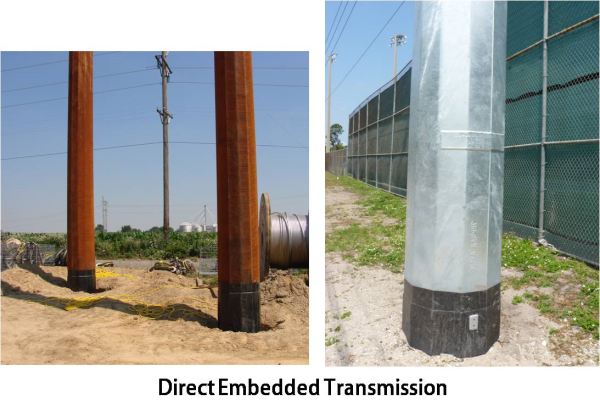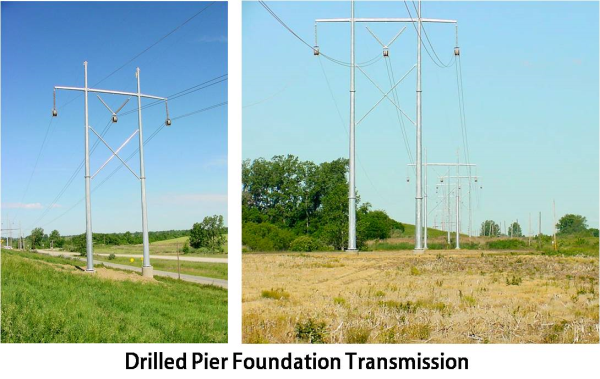The Rising Demand for 765kV Substations: Powering the Next Generation of the Grid
Explore how manufacturers like DIS-TRAN Steel are advancing grid resilience by engineering steel...
By Brooke Barone on April 17 2014

Before I started writing and learning about the utility industry, I honestly never really noticed the difference, nor did I actually know the difference, in transmission poles or how they were installed. Now, a year and eight months later, I catch myself scurrying to get my iPhone out while driving down the highway to take pictures of tapered tubular davit arms or dead-end h-frame structures.
Have you ever paid attention to the way a transmission pole was installed? I’m sure if you’re not an engineer or someone in the utility industry your answer would be no, but for those of you who are, have you noticed the foundation method? Do you know the different methods?
Well, in the ASCE 48-11, Design of Steel Transmission Pole Structures, three specific methods used to place a steel transmission pole into the ground are pointed out:
There are also other methods such as spread, pile, rock anchor foundations, etc. that can be used for more specific applications. But the two that I want to focus on are drilled shaft foundation (also known as drilled pier foundation) and direct-embedded.
When deciding on which method is best suited, there are some considerations that should be addressed in the initial design as well as restrictions to pay attention to. Things like the type of structure, the importance of structure, allowable foundation movement or rotation, and geological conditions are important and shouldn’t be overlooked.


Explore how manufacturers like DIS-TRAN Steel are advancing grid resilience by engineering steel...
As temperatures rise, ensuring heat safety in the utility industry becomes paramount for DIS-TRAN...
In manufacturing, quality control is a top priority, especially when it comes to structural...